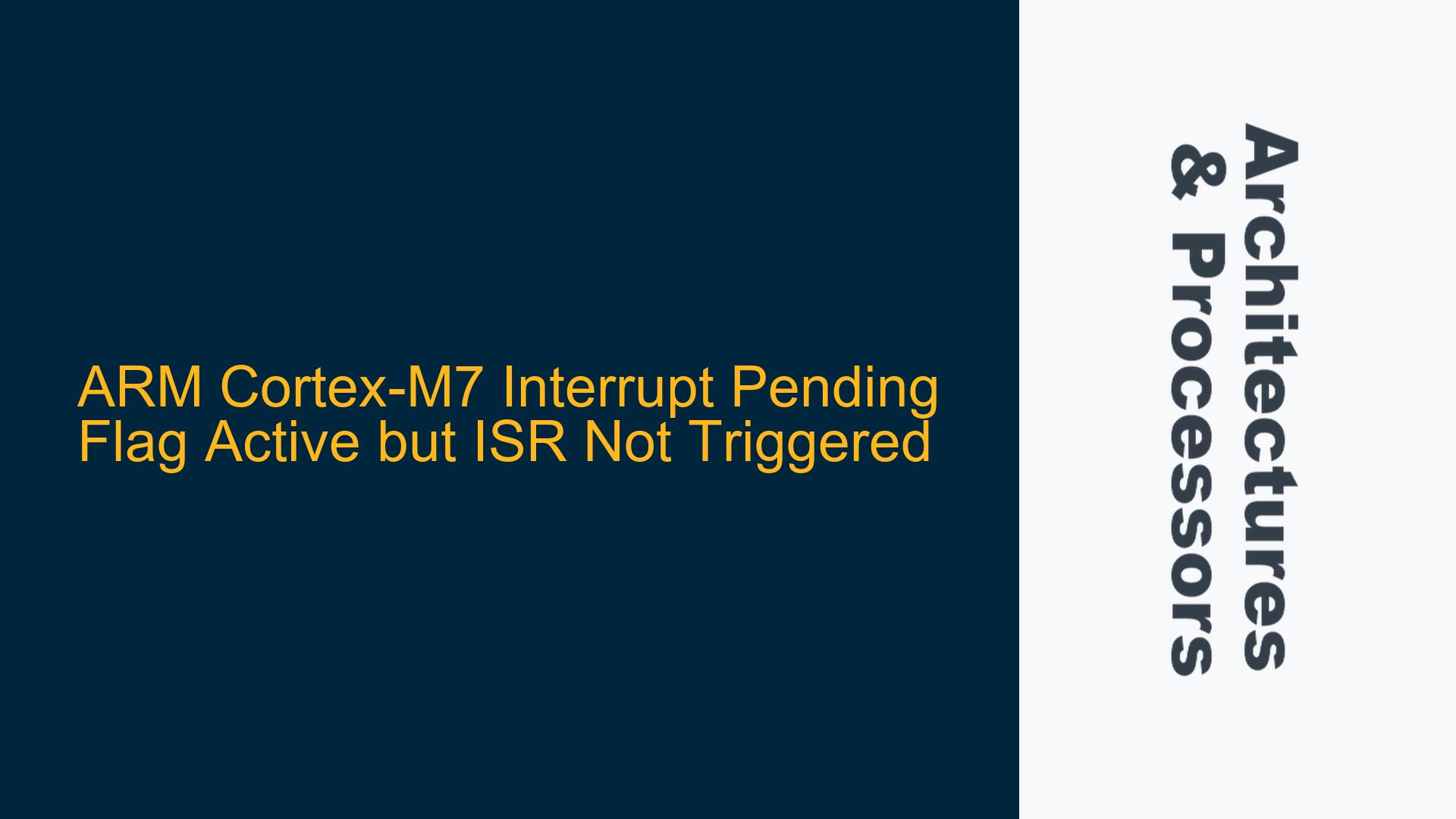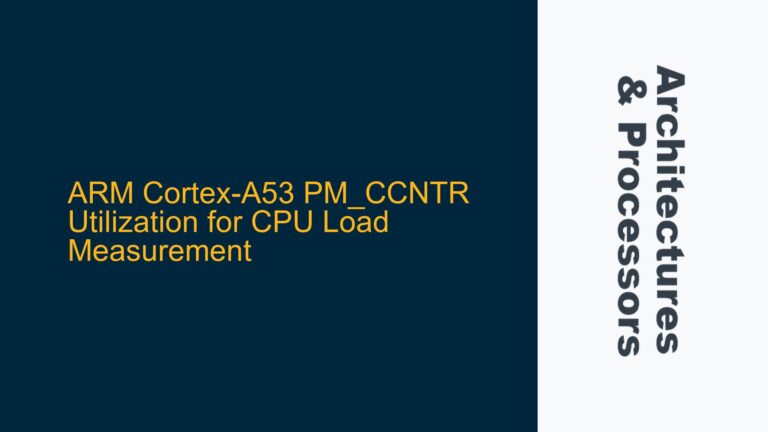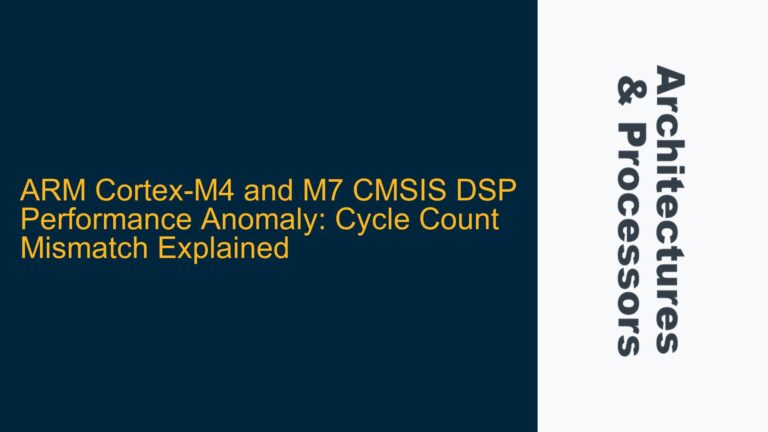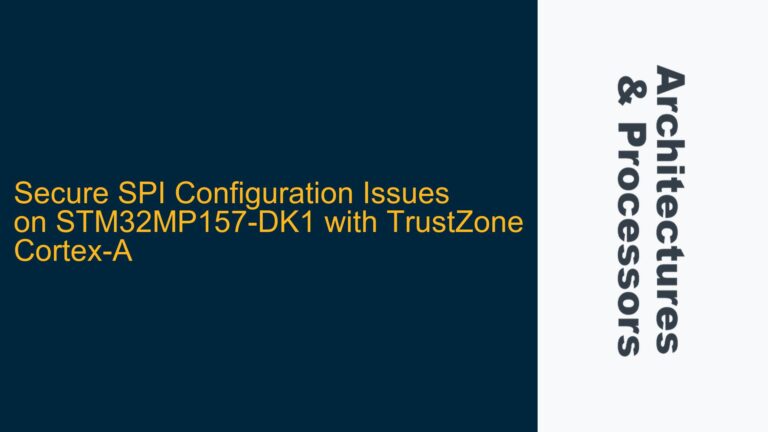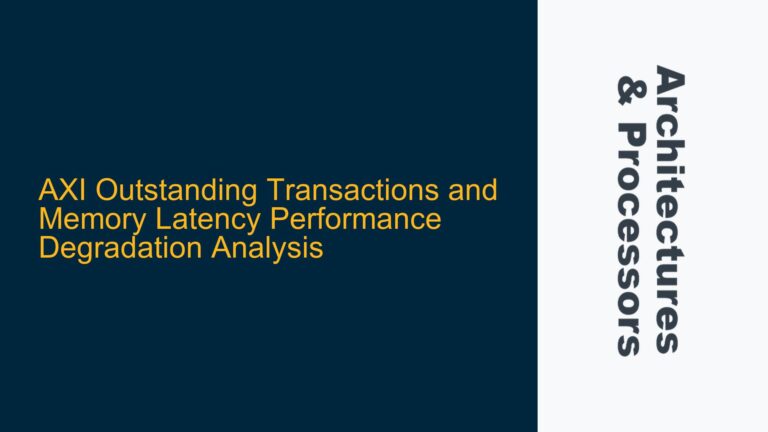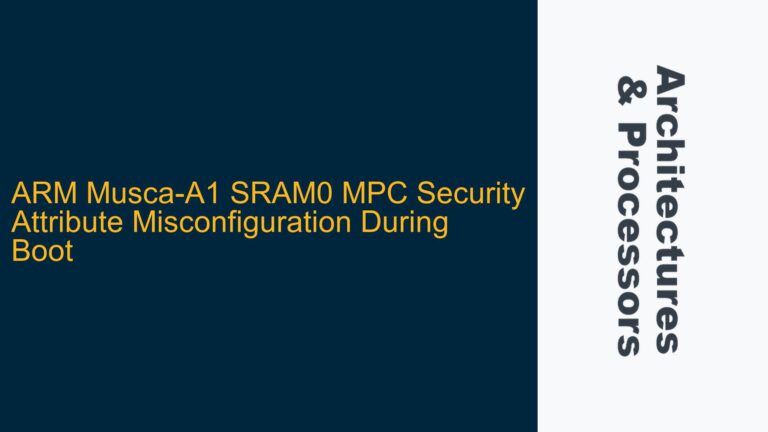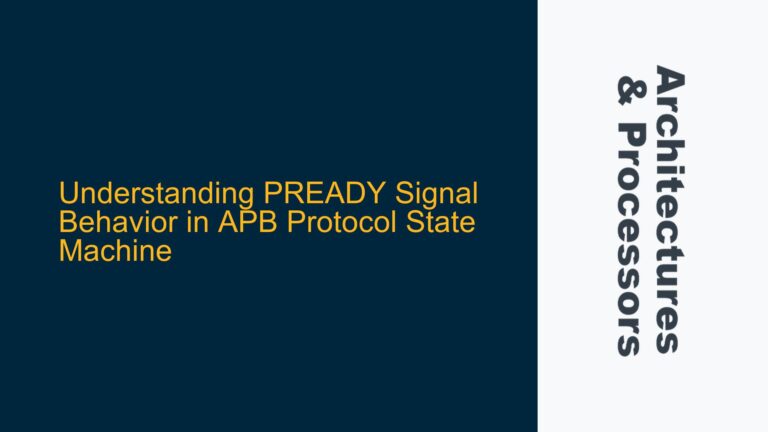ARM Cortex-M7 Interrupt Pending Flag Activation Without ISR Execution
The core issue revolves around the ARM Cortex-M7 processor where an external interrupt’s pending flag is set correctly in the Interrupt Set-Pending Register (ISPR), and the corresponding interrupt is enabled in the Interrupt Set-Enable Register (ISER). Despite these configurations, the Interrupt Service Routine (ISR) associated with the interrupt is not being executed. This behavior is observed after a specific function call (my_fun()) that is expected to trigger the interrupt. The system is configured with a single enabled interrupt, and priority settings have been verified. The vector table is correctly populated, including the ISR for the specific interrupt (InterruptHandler_128), which is implemented as an infinite loop (while(1)). The system is being debugged using a Lauterbach debugger with DBGEN set to 1, raising questions about potential debugger-related interference.
The key registers and their states before the interrupt sequence are as follows:
- ICSR (Interrupt Control and State Register):
0x00403803 - SHCSR (System Handler Control and State Register):
0x0D - HCSR (HardFault Status Register):
0x01010001 - BASEPRI:
0
The vector table is defined with 145 entries, including the stack pointer, system handlers, and peripheral interrupts. The ISR for the specific interrupt (InterruptHandler_128) is correctly placed in the vector table but is not being invoked despite the pending flag being active.
Missing Interrupt Configuration or Debugger Interference
Several potential causes could explain why the ISR is not being executed despite the pending flag being set and the interrupt being enabled:
-
Incomplete Interrupt Configuration: While the interrupt is enabled in ISER and the pending flag is set in ISPR, other critical interrupt-related configurations might be missing. For instance, the NVIC (Nested Vectored Interrupt Controller) might require additional settings such as priority grouping, subpriority configuration, or clearing of other pending interrupts that could block the desired interrupt.
-
Debugger Interference: The system is being debugged using a Lauterbach debugger with DBGEN set to 1. This configuration might interfere with normal interrupt handling. Debuggers can sometimes mask interrupts or alter the processor’s state, preventing the ISR from being triggered. The DBGEN signal, when active, can place the processor in a debug state, which might suppress interrupt handling.
-
Vector Table Misalignment or Corruption: Although the vector table appears to be correctly defined, there might be issues with its alignment or initialization. The Cortex-M7 requires the vector table to be aligned to a specific boundary (typically 512 bytes). Misalignment or corruption of the vector table could prevent the processor from correctly fetching the ISR address.
-
System Handler Blocking: The state of system handlers (e.g., HardFault, BusFault) might be blocking the interrupt. The SHCSR and HCSR registers indicate that some system handlers are active or pending. If a higher-priority system handler is active, it might prevent the lower-priority external interrupt from being serviced.
-
Cache or Memory Barrier Issues: The Cortex-M7 features caches and memory barriers that can affect interrupt handling. If data or instructions related to the ISR are cached incorrectly or if memory barriers are not used appropriately, the processor might not execute the ISR as expected.
Verifying Interrupt Configuration and Debugger Settings
To resolve the issue, follow these detailed troubleshooting steps:
-
Verify NVIC Configuration:
- Ensure that the interrupt priority is set correctly using
__NVIC_SetPriority(). The priority value should be within the valid range for the Cortex-M7 (0 to 255, with lower values indicating higher priority). - Check the priority grouping configuration using
__NVIC_SetPriorityGrouping(). Incorrect grouping can affect interrupt preemption and subpriority handling. - Clear any other pending interrupts that might block the desired interrupt. Use
__NVIC_ClearPendingIRQ()to clear pending flags for other interrupts.
- Ensure that the interrupt priority is set correctly using
-
Check Debugger Configuration:
- Disable the debugger temporarily to rule out interference. Run the code without the debugger connected and observe if the ISR is triggered.
- If the debugger is necessary, ensure that it is configured to allow normal interrupt handling. Check the Lauterbach debugger settings for options related to interrupt masking or suppression.
-
Validate Vector Table Alignment and Initialization:
- Verify that the vector table is aligned to the required boundary (512 bytes for Cortex-M7). Use the
__VECTOR_TABLE_ATTRIBUTEto ensure proper alignment. - Check that the vector table is correctly initialized in memory. Use a memory viewer in the debugger to inspect the vector table contents and ensure that the ISR address for InterruptHandler_128 is correctly populated.
- Verify that the vector table is aligned to the required boundary (512 bytes for Cortex-M7). Use the
-
Inspect System Handler State:
- Review the state of system handlers using the SHCSR and HCSR registers. Clear any active or pending system handlers that might block the external interrupt.
- Ensure that the BASEPRI register is set to 0, allowing all interrupts to be serviced.
-
Implement Cache and Memory Barrier Management:
- Use Data Synchronization Barriers (DSB) and Instruction Synchronization Barriers (ISB) to ensure that all memory operations related to the interrupt configuration are completed before enabling interrupts.
- Invalidate the instruction cache if the ISR code is modified at runtime. Use
__ISB()and__DSB()to enforce proper cache coherency.
-
Test with Minimal Configuration:
- Simplify the system configuration to isolate the issue. Disable all other interrupts and system handlers, and test with only the external interrupt enabled.
- Use a minimal ISR implementation (e.g., a simple flag set) to verify that the ISR is being triggered correctly.
By systematically addressing each potential cause and verifying the system configuration, the issue of the pending interrupt not triggering the ISR can be resolved. The key is to ensure that all interrupt-related settings are correctly configured, the vector table is properly aligned and initialized, and the debugger is not interfering with normal interrupt handling.
